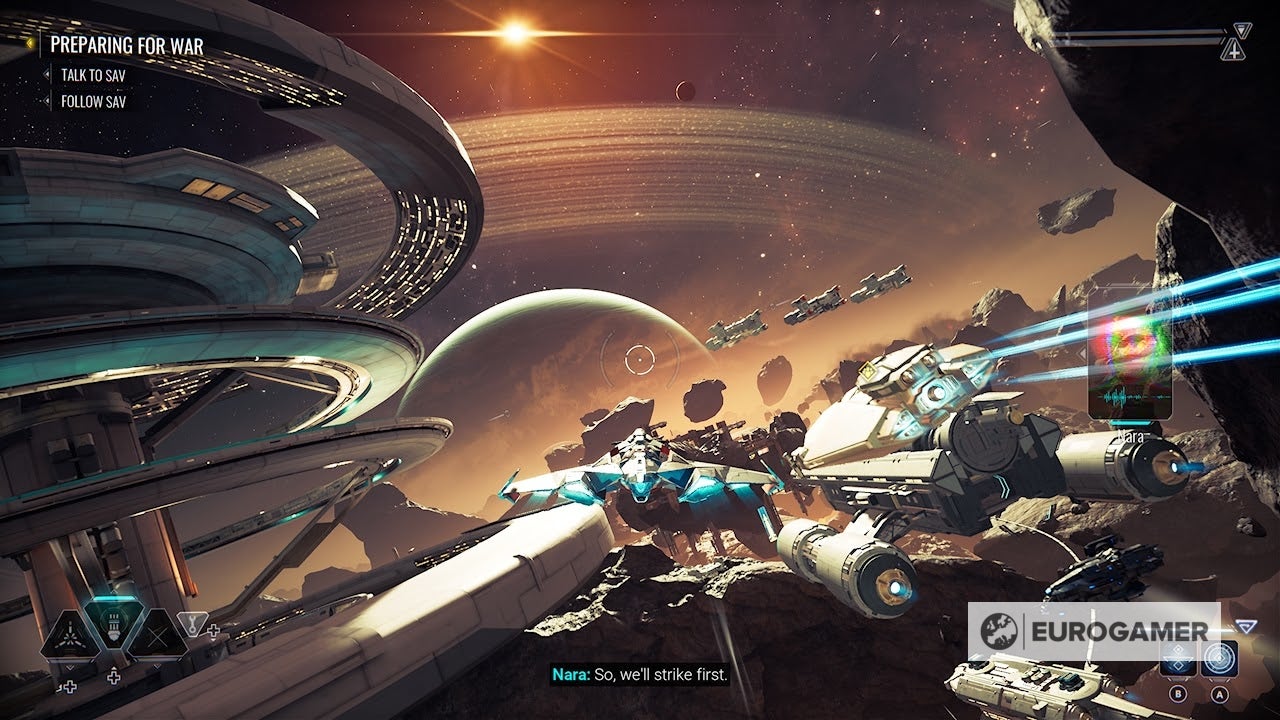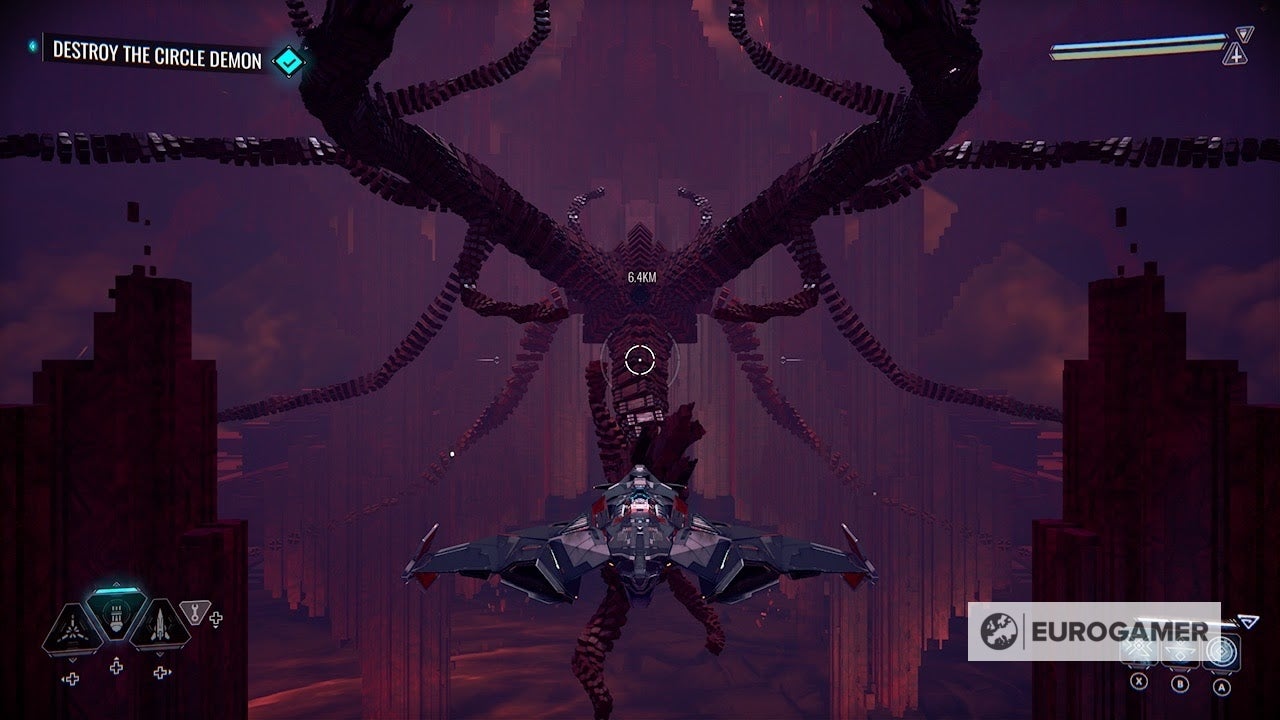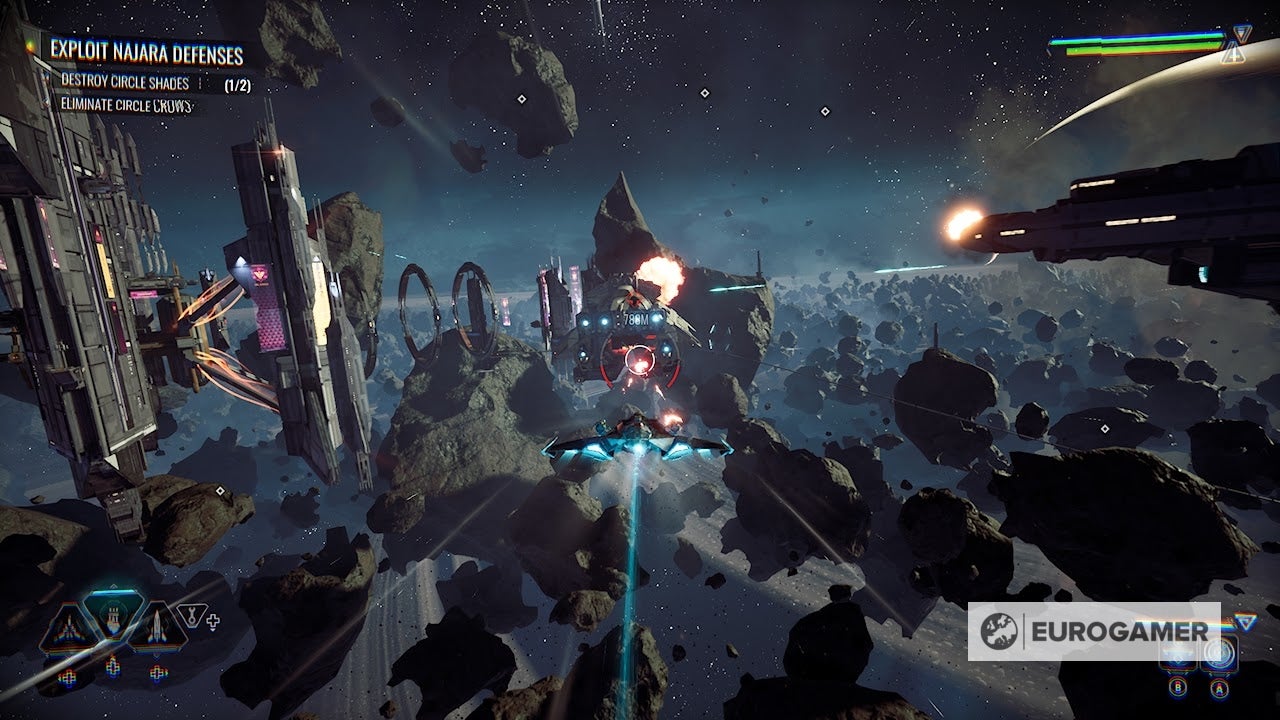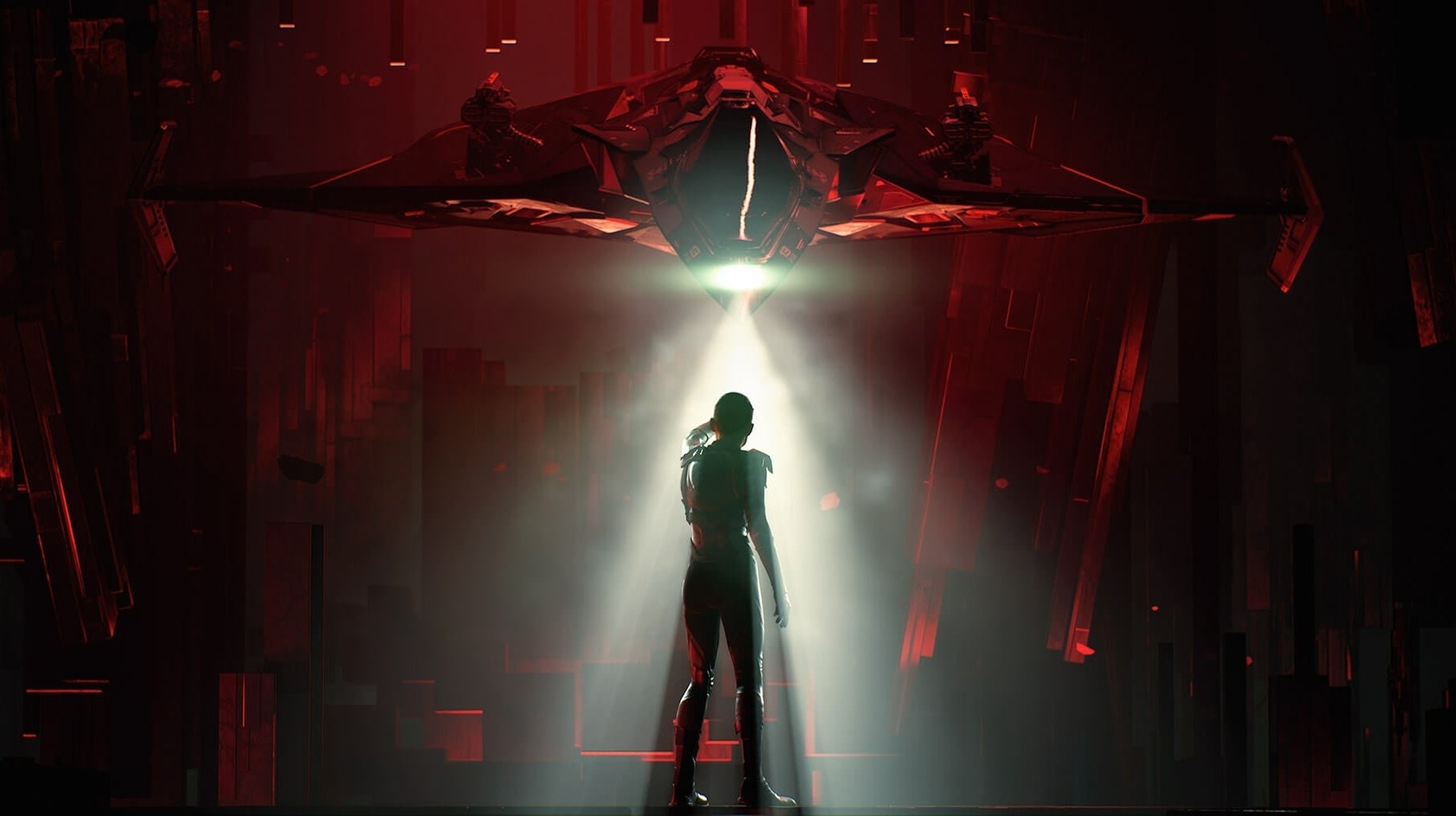Chorus (not as the poster might suggest) is the story of two different games. On the one hand, Chorus is a great space fighting game that should satisfy your needs as you roll around in enemy fleets. But on the other hand, there’s also a cinematic action-adventure experience woven into it – it’s this half that cuts off Chorus’s otherwise beautiful wings.
The choir fight is the highlight. When the game really offers you anything else, you’ll be waiting to return. Getting around enemy ships, tailing them and eventually blowing them up is always exciting, and even if it’s not original, Chorus’ moves are fast and fluid enough to keep it fun.
The game does incorporate its own innovations into the space combat formula, too. Your ship is equipped with three different weapons, each with their own uses and disadvantages. Gatling guns are your classic high rate machine – they’re easy to aim but relatively low damage, so they’re best at dealing with cannon fodder enemies. Lasers are primarily used to burn through enemy shields, making them easy to knock out completely. Then there’s the missile launcher, which you need to use against armored targets. It’s not the most strategic system, but switching between the three keeps momentum high and adds variety to combat.
The protagonist Nara has an ability, called a ritual, to make things more interesting. Throughout the adventure, Nara struggles to awaken some of her lost abilities. At first this was limited to sensory rituals, which are your standard eagle vision abilities, highlighting enemies, targets, collectibles, etc., but, while the ritual starts out mundane, eventually Nara becomes a beast of the battlefield, throwing ships into each other, Walk through them, or teleport behind them in the perfect spot for a kill.
Chorvs’… I mean Chorus’ big space battles do a lot of the heavy lifting. The area usually has two or three different factions and several enemy types, with the main enemy fleet ships being Nara. Blowing up a ship’s batteries, infiltrating its shields and destroying it from the inside are true Star Wars moments, of which there are several. This is what Chorus does best: combining unique abilities and smooth controls with a grand sense of scale, it transforms from a fairly ordinary space combat game into a frantic action experience. If developers Fishlabs and Deep Silver’s goal was to make a truly cinematic space combat game, they succeeded.
Play a few dogfights and you’ll crave more. But games do like to keep you waiting for more. Chorus could have been a fun, exciting, fun, exciting, and very playful game about shooting ships, with occasional cutscenes in between as a backdrop. Instead, Chorus is a fun game about shooting ships…but you’ll need a 10-minute break between dog fights for the pointless action-adventure filler. It may sound silly, but whenever I’m not filming in the choir, I’m reminded of the Mean Girls scene, where a schoolgirl said: “Once I saw Cady Herron in military pants and flip-flops, so I bought military pants and flip flops.” Chorus gives the impression in these in-between moments that it hears that you like God of War or Red Dead Redemption — or whatever the popular action-adventure game is — and wants to do whatever it takes Do your best to fit the main content of the genre into a space fighting game.

I don’t want to get too upset. Of course, the genre can tell strong narratives, and of course open worlds can be fun too. But in the chorus, sadly they are not.
The story begins with a lengthy cutscene full of instructions, backstory and a bunch of words that will be unfamiliar to anyone who hasn’t done the research. It describes Nara’s past as a powerful and murderous agent of The Circle, a cult who wants to rule the world to bring eternal peace, called Chorus. Despite all the striking imagery and high sci-fi concepts, the opening doesn’t give you a reason to care. There’s nothing mysterious, seductive, or emotional about the setting, and this lack of substance persists.
Let’s take Nara’s relationship with her ship as an example. The ship’s name is Forsa, short for Forsaken. He was sentient, and we found out that Nara had kept him locked up for the past seven years. Nara took him out of captivity early in the game, and he was rightfully angry about being left in some dark temple until the moment Nara needed him again. With Nara’s apology and Forsa’s forgiveness, the conflict was quickly resolved. The problem is solved. There’s some tension between them, but nothing too complicated until Forsa gets mad at her again in another climactic cutscene, which is also quickly resolved and forgotten. Somehow it’s both climate and anti-climax, like all the emotional moments in the game come out of nowhere and disappear without a trace. This uneven tone can be especially harsh when it’s combined with a lack of levity. I’m not expecting Marvel to be joking every five minutes, but when the character’s stress level is always at 10, it reduces the impact of those more tense moments.


Open-world hubs have similar problems, but lack leverage. There are side quests, some of them are fun, some of them are the usual escort or delivery quests. You can use loot to upgrade your stats. There are also random encounters that will bring you some of the sweet, sweet action you’ve been craving. But the problem with the open environment is how long it takes to travel through and get to the next mission. It’s essentially an excuse to focus forgettable conversations on you for six minutes while you just hold down the accelerator button and watch the kilometers go down.
Of course, Chorus’ story isn’t the worst thing I’ve seen in a video game — far from it. However, it frequently interrupts your playtime with forgettable fillers, which makes it a little annoying to play — not to mention that, aside from the lifeless narrative and lengthy traversal, Chorus’s battle offers enough to keep you on your own Take the bait.








